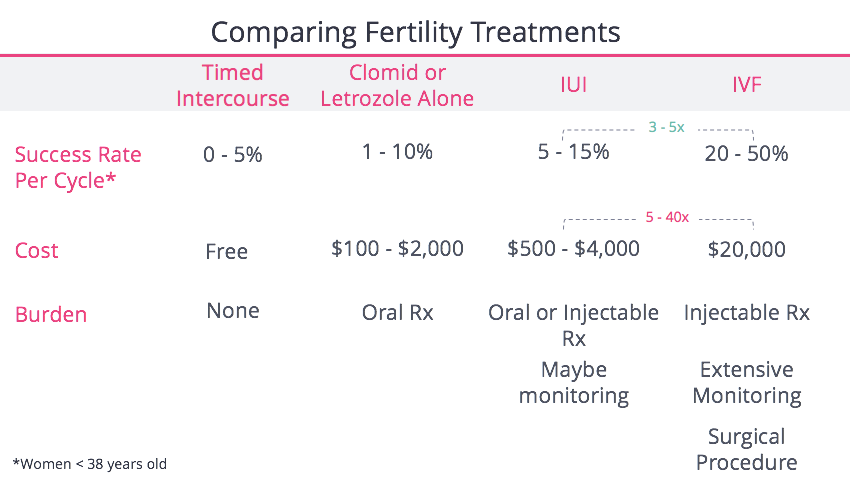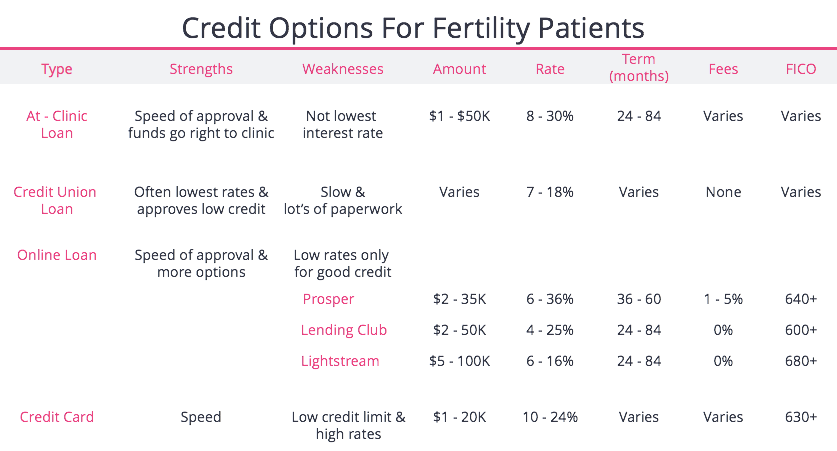How Much Does IVF Cost in Texas?
In Texas, dreams of starting a family often come with big questions—and one of the biggest is cost. If you’re considering in vitro fertilization (IVF), you’re not alone. Thousands of hopeful parents across the Lone Star State are exploring this path every year. But the price tag? It’s not a one-size-fits-all answer. From bustling Houston to quiet rural towns, IVF costs can shift based on where you are, what you need, and how you plan to pay for it. Let’s break it down together so you can feel confident about what’s ahead.
IVF isn’t cheap, but it’s also not out of reach if you know your options. In this guide, we’ll walk through the numbers, uncover hidden factors, and share practical ways to make it work—plus a few things you might not have thought about yet. Whether you’re just starting to research or ready to take the next step, here’s everything you need to know about IVF costs in Texas in 2025.
What’s the Average Cost of IVF in Texas?
IVF costs in Texas typically range between $10,000 and $30,000 per cycle. That’s a wide window, right? The average sits around $15,000 to $20,000 for a single round, including the basics like doctor visits, egg retrieval, and embryo transfer. But here’s the catch: that’s just the starting point. Medications, extra procedures, and even your clinic’s location can push the total higher—or, with some smart planning, keep it lower.
For example, a basic IVF cycle in Houston might start at $10,000, according to data from clinics like Houston Fertility Center. Head to a high-end spot in Dallas or Austin, and you could be looking at $20,000 or more, especially if they boast top success rates. Smaller towns might offer lower prices, but options could be limited. Posts on X in early 2025 pegged a single cycle at $17,000 to $25,000 nationwide, with Texas often falling on the lower end thanks to competitive clinic pricing.
What’s included in that base price? Usually, it covers:
- Initial consultations and ultrasounds
- Egg retrieval (a quick surgery to collect eggs)
- Lab work to fertilize eggs and grow embryos
- Embryo transfer (placing the embryo in the uterus)
But extras—like genetic testing or freezing embryos—aren’t always part of the deal. Medications alone can add $3,000 to $10,000, depending on how your body responds. So, while $15,000 might sound doable, the full picture often climbs closer to $20,000 or beyond for one try.
Why Do IVF Costs Vary So Much in Texas?
Texas is huge, and so are the differences in IVF pricing. It’s not just about geography—though that plays a role. Here’s what’s really driving the range:
Location Matters
Big cities like Houston, Dallas, and San Antonio have more clinics, which means more competition. That can keep prices reasonable, sometimes as low as $10,000 per cycle. But those same cities also have premium clinics with higher fees—think $25,000 or more—because of fancy tech or better success rates. Rural areas might be cheaper, but you could end up traveling for care, adding gas or hotel costs.
Clinic Reputation and Success Rates
A clinic with a stellar track record—like Texas Fertility Center in Austin—might charge more because they deliver results. Higher success rates can mean fewer cycles overall, potentially saving you money in the long run. On the flip side, newer or less-known clinics might offer lower prices to attract patients, but you’ll want to check their stats.
Your Unique Needs
Not every IVF journey looks the same. If you need intracytoplasmic sperm injection (ICSI) to help sperm fertilize the egg, that’s an extra $800 to $2,500. Genetic testing (PGT) to screen embryos? Add $1,000 to $3,500, plus lab fees. Using donor eggs or sperm? That could tack on $20,000 or more. Your age, health, and fertility challenges all shape the final bill.
Insurance (or Lack of It)
Texas law says group insurance plans must offer IVF coverage if they include pregnancy benefits—but employers can opt out. If you’re covered, you might pay little out of pocket. Without it, you’re footing the whole bill. Self-insured plans and religious employers often skip fertility coverage, leaving many Texans to get creative with financing.

Breaking Down the IVF Process and Costs
To really get a handle on the price, let’s walk through what happens during IVF—and what each step might cost in Texas.
Step 1: Consultation and Testing
Before anything starts, you’ll meet with a specialist. They’ll run tests—blood work, ultrasounds, maybe a semen analysis—to figure out your plan. This usually costs $250 to $500. Some clinics bundle it into the cycle fee, but others charge separately.
Step 2: Medications for Ovarian Stimulation
You’ll take shots to help your ovaries produce multiple eggs. These drugs aren’t cheap—expect $3,000 to $10,000, depending on your dose. A 2021 study from Fertility and Sterility found medication costs are a huge chunk of IVF expenses, often overlooked in base quotes.
Step 3: Egg Retrieval
This outpatient procedure uses a needle to collect eggs from your ovaries. It’s quick but requires anesthesia, so it’s pricey—around $3,000 to $5,000. That’s usually included in the cycle cost at Texas clinics.
Step 4: Fertilization and Embryo Growth
In the lab, eggs meet sperm (yours, your partner’s, or a donor’s). This step, plus a few days of embryo monitoring, is another $3,000 to $5,000, baked into most base fees.
Step 5: Embryo Transfer
The final step places an embryo in your uterus. It’s simpler than retrieval, costing about $1,500 to $3,000. Some clinics offer “frozen embryo transfer” later, which might add $2,000 if you freeze extras.
Optional Add-Ons
- ICSI: $800–$2,500
- PGT: $1,000–$3,500 + lab fees
- Embryo Freezing: $500–$1,000, plus $300–$500/year for storage
Add it all up, and a “basic” cycle can balloon fast. That’s why getting a detailed quote from your clinic is key.
How Many IVF Cycles Will You Need?
Here’s a tough truth: IVF doesn’t always work the first time. Data from FertilityIQ says the average patient needs 2.3 to 2.7 cycles to have a baby. In Texas, that could mean $35,000 to $60,000 total—or more if you need extras.
Success rates depend on age:
- Under 35: 50–55% chance per cycle
- 35–40: 30–40%
- Over 40: 10–20%
Younger folks might get lucky on round one, while older patients might need three or more tries. Clinics like CARE Fertility in Bedford note that each failed cycle ups the emotional and financial stakes, so planning for multiple rounds is smart.
Does Insurance Cover IVF in Texas?
Texas is one of 15 states with some IVF coverage rules, but it’s tricky. The law says group plans must offer coverage if they include pregnancy benefits—but only if you’ve had infertility for five years or have specific conditions. Employers can still say no, and self-insured plans (common with big companies) aren’t bound by this. Religious employers get a pass too.
If you’re lucky, insurance might cover:
✔️ Diagnostic tests (up to $500)
✔️ Part of the cycle cost (e.g., $5,000–$10,000)
✔️ Some medications
But most Texans pay out of pocket. Check your plan—call HR or your insurer—and ask about fertility benefits. Even partial coverage can slash your costs.
Creative Ways to Pay for IVF in Texas
No insurance? No problem. Texans have options to make IVF more affordable. Here’s how real people are doing it:
Financing Plans
Many clinics, like Aspire Fertility, offer payment plans. You might pay $500 a month instead of $15,000 upfront. Interest rates vary, so compare terms—some are as low as 5%, others closer to 15%.
Fertility Grants
Groups like the Fertility Foundation of Texas give cash to Central Texas residents. Grants range from $1,000 to $10,000, based on need. Apply early—funds run out fast.
Discount Programs
Some clinics offer “shared risk” deals. Pay $20,000–$25,000 upfront for multiple cycles, and get a refund (50–80%) if it doesn’t work. Houston Fertility Center’s INVOcell option—a lower-cost IVF method—starts at $5,000, cutting lab fees by using your body as an incubator.
Tax Breaks
IVF costs can be tax-deductible if you itemize. A 2023 IRS rule says medical expenses over 7.5% of your income qualify. Talk to a tax pro—$20,000 in IVF bills could mean a $2,000–$3,000 deduction.
Travel for Cheaper Care
Flights to a low-cost clinic (like CNY Fertility out of state) might save you thousands. A cycle there can be $6,000, plus $1,000 for travel—still less than $15,000 in Dallas.

Hidden Costs You Might Not Expect
Most articles talk about the big stuff—cycle fees, meds—but there are sneaky expenses too. Here’s what caught some Texas parents off guard:
Time Off Work
Egg retrieval and transfer mean a day or two off, maybe more if you’re far from the clinic. No paid leave? That’s lost wages—$200–$500 for some.
Emotional Support
Therapy isn’t cheap—$100–$200 a session—but IVF stress is real. A 2024 Stanford study found women who don’t conceive after fertility treatment are 48% more likely to need mental health meds. Budgeting for support can save your sanity.
Multiple Births
IVF ups your odds of twins (20–30% vs. 1–2% naturally). Double the diapers, double the daycare—$15,000+ a year, per the USDA. Freezing embryos for single transfers can cut this risk.
Real Stories: What Texans Paid for IVF
Numbers are great, but stories hit home. Here’s what three Texas families spent in 2024–2025:
Sarah, 32, Houston
- Cost: $18,000 for one cycle
- Details: Insurance covered testing ($400), but she paid $12,000 for the cycle and $5,600 for meds. Success on the first try—a baby girl.
- Tip: “Ask about discounts. We got 10% off for paying cash.”
Miguel, 38, Lubbock
- Cost: $45,000 over three cycles
- Details: No insurance, rural clinic. $15,000 per cycle, plus $6,000 in travel and meds. Twins after round three.
- Tip: “Save embryos—it’s cheaper than starting over.”
Emily, 41, Austin
- Cost: $65,000 total
- Details: Donor eggs ($25,000), two cycles ($20,000 each). High-end clinic, no insurance. Success after a long road.
- Tip: “Get second opinions. Prices varied by $5,000 between clinics.”
Interactive Quiz: What’s Your IVF Budget?
Wondering where you’d land? Take this quick quiz (circle your answers):
- Where do you live?
- A) Big city (Houston, Dallas) – Add $2,000
- B) Smaller town – Base cost
- How old are you?
- A) Under 35 – Base cost
- B) 35–40 – Add $5,000 (more cycles)
- C) Over 40 – Add $10,000 (donor eggs possible)
- Insurance coverage?
- A) Yes – Subtract $5,000
- B) No – Base cost
- Extras needed? (ICSI, PGT, etc.)
- A) Yes – Add $3,000
- B) No – Base cost
Tally it up: Start at $15,000. Add or subtract based on your answers. This is your rough estimate—tweak it with a clinic quote!
New Research: What’s Changing IVF Costs in 2025?
IVF isn’t static—science and policy are shifting the landscape. Here’s what’s new in Texas:
Lower-Cost Tech
INVOcell, used by clinics like Fertility Center of San Antonio, cuts costs to $5,000–$9,000 per cycle. It skips fancy lab incubators, using your body instead. A 2023 study in Human Reproduction found success rates rival traditional IVF for the right patients.
Policy Push
After Alabama’s 2024 embryo ruling, Texas Gov. Greg Abbott voiced support for IVF access. No new laws yet, but a February 2025 White House order aims to boost affordability nationwide. Could Texas follow with subsidies? Stay tuned.
Mental Health Link
That Stanford study? It’s pushing clinics to bundle counseling—some now offer free sessions with cycles. It’s not just nice—it could lower dropout rates, saving you from extra tries.

Your Action Plan: Making IVF Affordable in Texas
Ready to dive in? Here’s a step-by-step guide to keep costs down:
- Shop Around
- Call 3–5 clinics. Ask for itemized quotes—cycle cost, meds, add-ons. Compare success rates too (check CDC data).
- Check Insurance
- Dig into your plan. Look for “infertility” or “ART” coverage. No luck? Ask HR to add it—some employers will.
- Explore Financing
- Apply for clinic payment plans or grants. The Fertility Foundation of Texas opens apps yearly—mark your calendar.
- Cut Extras Wisely
- Skip PGT unless you’ve had miscarriages or genetic risks. Freeze embryos instead of rushing fresh transfers.
- Build a Buffer
- Save $5,000 extra for surprises—travel, meds, or a second cycle. A small cushion eases stress.
Poll: What’s Your Biggest IVF Worry?
We’re curious—what’s on your mind? Vote below and see what others think:
- A) The cost
- B) Success rates
- C) Emotional toll
- D) Finding the right clinic
(Results show up in next month’s post!)
Beyond the Price Tag: What IVF Really Costs
Money’s only part of it. IVF takes time—weeks of shots, appointments, waiting. It takes heart—hope mixed with uncertainty. A 2024 Swedish study found couples who don’t conceive after treatment face higher divorce rates and mental health struggles. But for those who make it? The payoff’s a family.
In Texas, you’ve got options most states envy—competitive clinics, some coverage, and a growing push for access. Is it worth it? For Sarah in Houston, $18,000 was a steal for her daughter. For Miguel, $45,000 felt steep until he held his twins. Your journey’s yours alone, but you don’t have to figure it out solo.







